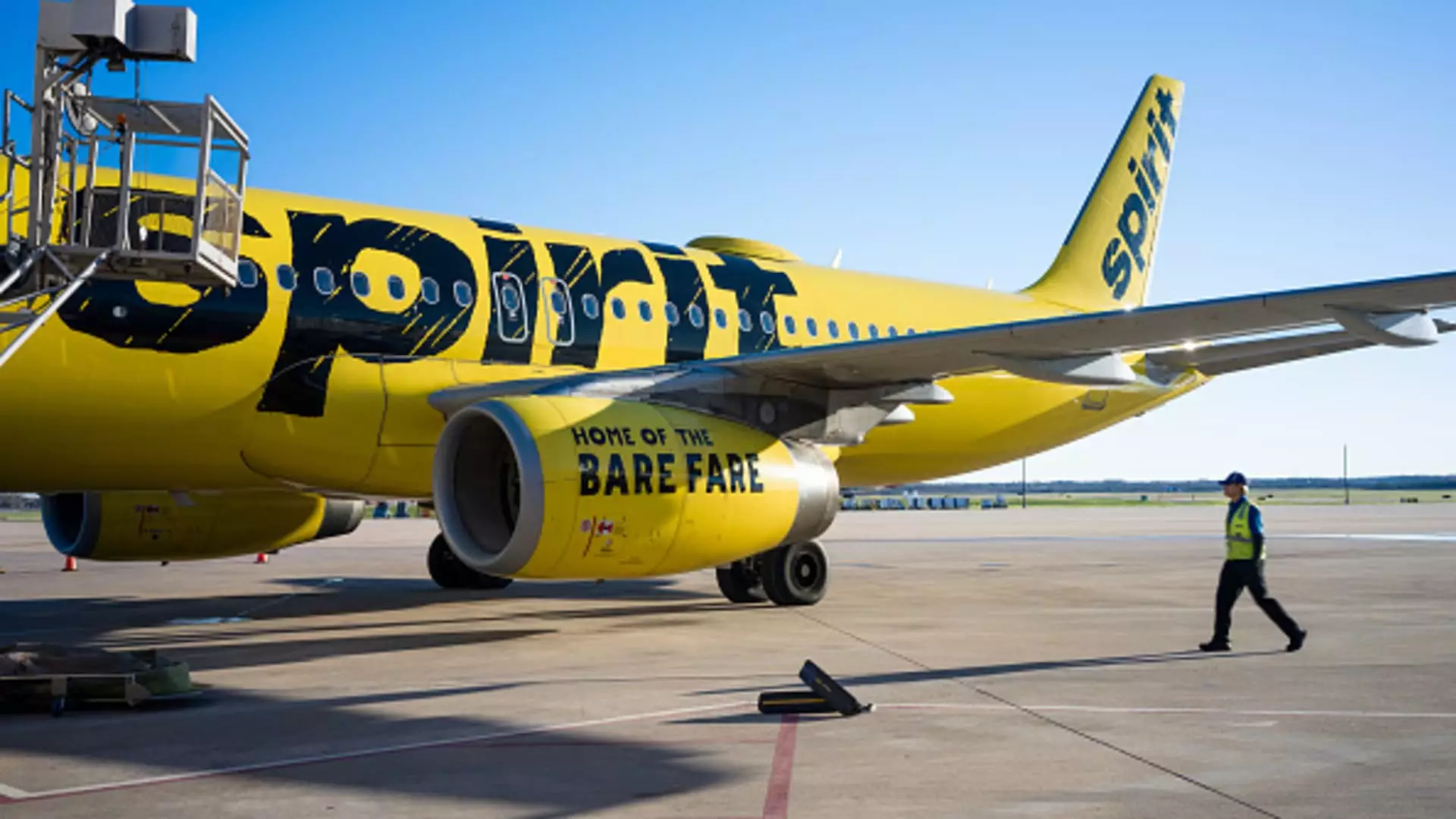Spirit Airlines is experiencing a tumultuous period as it strives to navigate through financial treacheries that have plagued the aviation industry, particularly low-cost carriers. On a recent Friday, the airline disclosed that it has successfully negotiated an extension with its credit card processor, pushing its debt refinancing timeline to December, mere hours before the previous deadline. This timely extension comes after a significant drawdown of their entire $300 million revolving credit facility earlier in the week, unveiling the gravity of their liquidity needs. While Spirit has predicted an end-of-year liquidity figure slightly exceeding $1 billion, the situation remains precarious as the airline grapples with multiple financial challenges.
In its recent filings, Spirit Airlines flagged that discussions are ongoing with holders of its senior secured notes due by 2025 and convertible senior notes due by 2026. This sentiment highlights the company’s urgent need for a viable resolution regarding looming debt maturities. The repeated extensions—initially set for September and subsequently for October—illustrate the airline’s precarious financial landscape where every day counts.
However, the extension comes at a time when Spirit’s stock plummeted to a painful low, closing down approximately 3% at less than $1.50 per share, signaling investor wariness and mistrust. With shares plummeting over 90% this year and nearly 40% in October alone, the question looms—can the company steer the ship back to stability before it capsizes entirely?
The challenges extend beyond financial adjustments. Spirit’s operational strategy over the past year manifests in workforce furloughs, significant cuts to its flight schedule, and delayed aircraft deliveries—all aimed at conserving cash. This was a necessary move, particularly given the recent grounding of many planes related to a Pratt & Whitney engine recall. Such drastic measures are indicative of an airline fighting to survive amidst a torrent of unfavorable conditions.
Moreover, the struggle to secure robust booking rates has further exacerbated the company’s struggles. Reports of weaker-than-expected bookings compound the financial insecurities, raising concerns about the long-term viability of the low-cost airline model in an increasingly competitive market.
External factors have not been kind to Spirit Airlines either. The botched acquisition deal with JetBlue Airways serves as a significant setback; a federal judge’s antitrust ruling effectively dismantled the partnership. This development not only hampered Spirit’s immediate growth prospects but also injected a dose of uncertainty regarding strategic direction in a market where expansive operations are often critical to survival.
The situation facing Spirit Airlines is dire yet reflective of broader trends observed in the aviation sector. As the airline grapples with a consolidation of debt negotiations, operational cutbacks, and market pressures, the pressing question remains: will Spirit Airlines find the necessary altitude to emerge from its current tailspin, or is it destined to face more significant turbulence ahead? The forthcoming months are pivotal, and all eyes remain on the action the airline will take amidst such turbulence.

